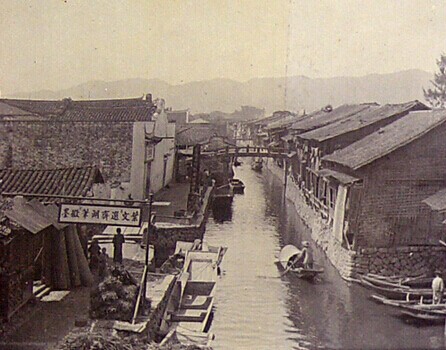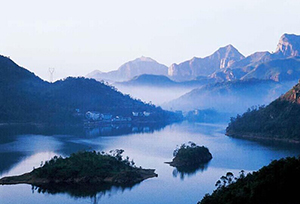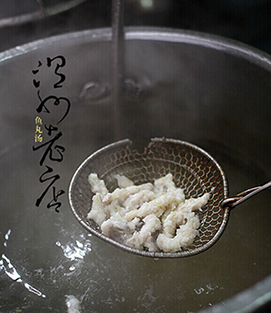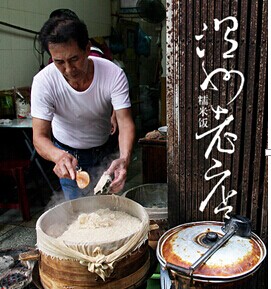About SPS
Introduction of Wenzhou
Location
Wenzhou is located at the middle section of the circum-Pacific ,west coast of China, intersecting the two economic zones of the Yangtze River and the Pearl River Deltas. It is the economic, cultural and transport center of south
Zhejiang Province.

History
Wenzhou was once a famous town of the Eastern Ou(the eastern part of the Oujiang River valley) with a brilliant cultural history. In 192 BC it was the capital of the Kingdom of the Eastern Ou and AD 323 it became Yongjia Prefecture. It was also called the City of White Deer, for, as legend has it, when the city was being built a white deer passed by it holding a flower in its mouth. In AD 675 it began to be called Wenzhou, its name to this day. Historically, Wenzhou has been a city renowned fot its handicrafts and also as one of the birthplaces of celadon. Wenzhou's papermaking, shipbuilding, silk, embroidery, lacquerwork, as well as its shoes and leather products, achieved a fairly eminent position in the history of China. During the period of the Southern Song Dynasty, it was opened up as a foreign trade port, enjoying a reputation as p prosperous coastal city comparable to Hangzhou. Wenzhou is the hometown of Nanxi Opera or the Southern Opera. The Tale of the Pipa, written by the famous Wenzhou playwright Gao Ming in the mid-fourteenth century, has been translated into a number of foreign languages and achieved worldwide renown.

Wenzhou is 1682 years old with a profound and brilliant cultural background. It has given birth to many outstanding people and great scholars. Among them were Wang Shipeng, Chen Fuliang, Ye Shi, Huang Gongwang and Liu Ji during the South Song Dynasty, as well as Sun Yirang, Xia Nai, Xia Chengtao and Su Buqing and others of the modern era. All of them have exerted significant influence in the history of Chinese philosophy, literature and science. Renowned as the cradle of mathematicians in China, the city has teemed with over 200 mathematic professors in the recent 100 years, among whom Su Buqing, Gu Chaohao, Jiang Lifu and other mathematicians have enjoyed great fame both at home and abroad. Furthermore, Wenzhou is also reputed as the "Home of Swimming in China", "City of Chess" and "City of Poetry in China".
Weather
Wenzhou derives its present name from its mild elimate. It is a part of those subtropicla maritime regions with a humid climate, noticeable for its alternating dry and monsoon periods, with distinct seasons and abundant rainfall, yet without intense heat in the summer nor bitter cold in the winter. It has an average annual temperatuer ranging between 1500 to 1900 mm and a frost-free period of 260 to 280 days. The duration of sunshine amounts to an average 1700 to 2000 hours annually.
Languages
Although Mandarin is widely spoken, the local dialect is Wenzhounese and is regarded by Chinese nationals as one of the most difficult dialects in the country, so much so that Wenzhounese speakers were used by the Chinese resistance in World War II to communicate under the nose of the Japanese. Due to their entrepreneurial nature, Wenzhounese people founded many of the China towns around the globe (where their language is still spoken) and own the leases to many properties in Beijing and even San Francisco.
Sights
Wenzhou boasts wonderful landscapes with rugged mountains and tranquil waters, including three state-level scenic spots, namely the Yandang Mountains, the Nanxi River and the Baizhangji Fall-Feiyun Lake, and two national nature reserves,namely the Wuyanling Ridge and the Nanji Islands, among which Yandang Mountain has been named as World Geopark, while Nanji Islands are listed as UNESCO’s Marine Nature Reserve of World Biosphere Reserves. Scenic area accounts for 25% of the city’s land space.

Food Culture
Wenzhou cuisine, which also called Ou cuisine, is one of Zhengjiang four cuisine species. Wenzhou cuisine is distinguished for its choice seafood, light oil light gravy, emphasis on the knife, tastes fresh and light, pay attentation to cooking, exquisite and detail. The well-know Wenzhou Fish Cake is traceable to the year 1921. Its major ingredients include:fish, tofu, sweet potato powder and fat.
Duck tongue adopts dried duck tongue as raw material which id steamed together with soy sauce, sugar, cooking wine and other spices. The Duck Tongue thus produced boasts fresh meat, and tastes tough yet soft as well.
Recommend: Glutinous rice, Wonton, Wenzhou Fish Balls, Glue Pudding, Steamed Rice Cake, Sautéed, Fish Gelatin, Pig Intestines &Duck Blood Soup, Fried Glutinous Cake in Lard, Maibing, Fried Jiaozi.


Economy
Wenzhou exports food, tea, wine, jute, timber, paper, Alunite (a non-metallic mineral used to make alum and fertilizer). Alunite is quite abundant here and sometimes Wenzhou claims to be the "Alunite Capital of the World". Its 10 main industries each exceeding 1.5 billion dollars are electrical machinery, leather products, general equipment, power supply, plastic manufacturing, textile and garment, transport equipment, chemical products, metal products and metal processing.Wenzhou is a city full of vibrant business activities. When China began economic reforms in 1978, Wenzhou was the first city in China to set up individual and private enterprises as well as shareholder cooperatives. It has also taken the lead in carrying out financial system reform and structural reform in townships. Being a pioneer in utilising marketing mechanism to develop urban constructions, Wenzhou has won a number of firsts in China and set many national records.
Transportation
The Wenzhou Yongqiang Airport serves the Wenzhou area, with scheduled flights to major cities in mainland China as well as Hong Kong and Macau. New direct air route to Taipei and Cheju Island of Korea have been opened in 2012. The Airport is situated on the southeast of Wenzhou city proper, 20 km (12 mi) away from the city center. It’s been graded as nation’s Category B civil airport, serving a population of 20 million spanning areas of Wenzhou, Taizhou and Lishui of Zhejiang and Ningde of the neighbouring Fujian. The correlated GDP of the area reaches 300 billion RMB.
Because of Wenzhou's geographic location, it is difficult to build a railway to connect it with other cities. Wenzhou's first railway, the Jinhua-Wenzhou Line, opened on June 11, 1998. The railway runs northwest to Jinhua and is operated by the Jinwen Railway Company. The railway has a total length of 251 km (156 mi), including 135 bridges of 14 km (8.7 mi) in length 96 tunnels of 35 km (22 mi) in length. The Jinwen Railway was the first in China to be built with local capital, and gave birth to China's first standardized joint-stock enterprise: Zhejiang Jinwen Rail Way Development Co., Ltd. Both lines accommodate high-speed CRH (China Railway High-speed) trains running at speeds of up to 200 km/h (120mph) and have dramatically shortened rail travel time to neighboring cities This is Wenzhou, a city full of vitality, a city towards the goals of "The world's leading city". Wenzhou welcomes you!

